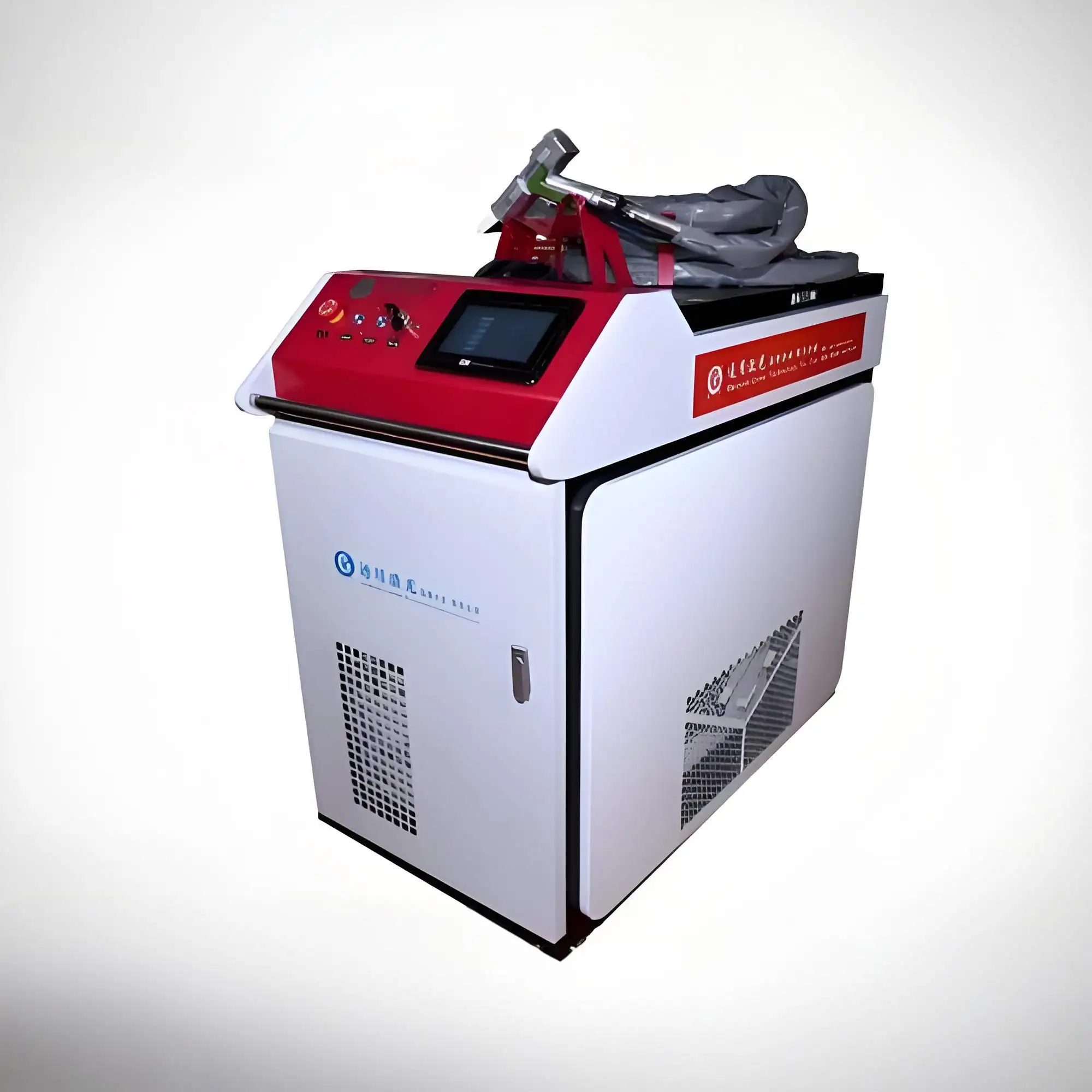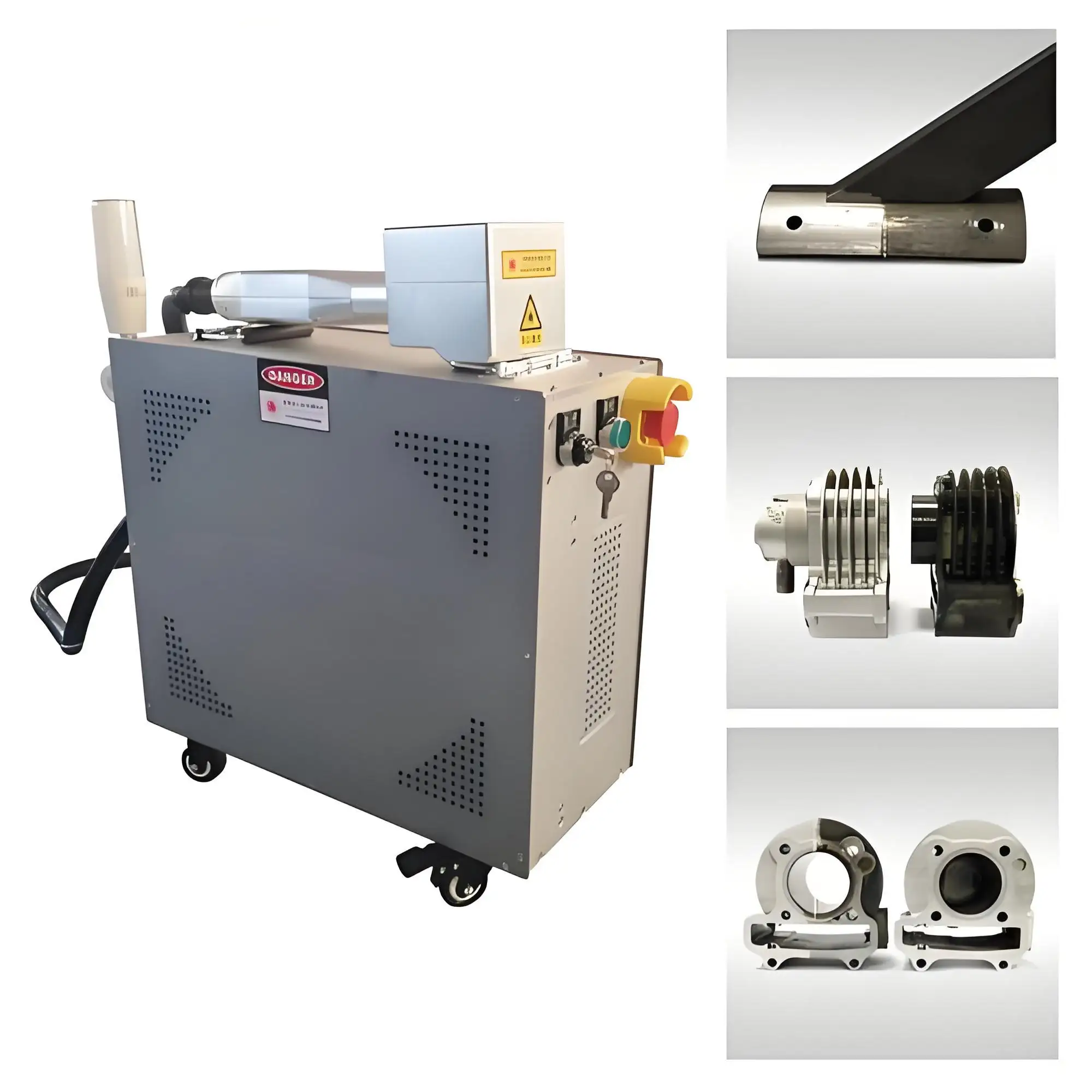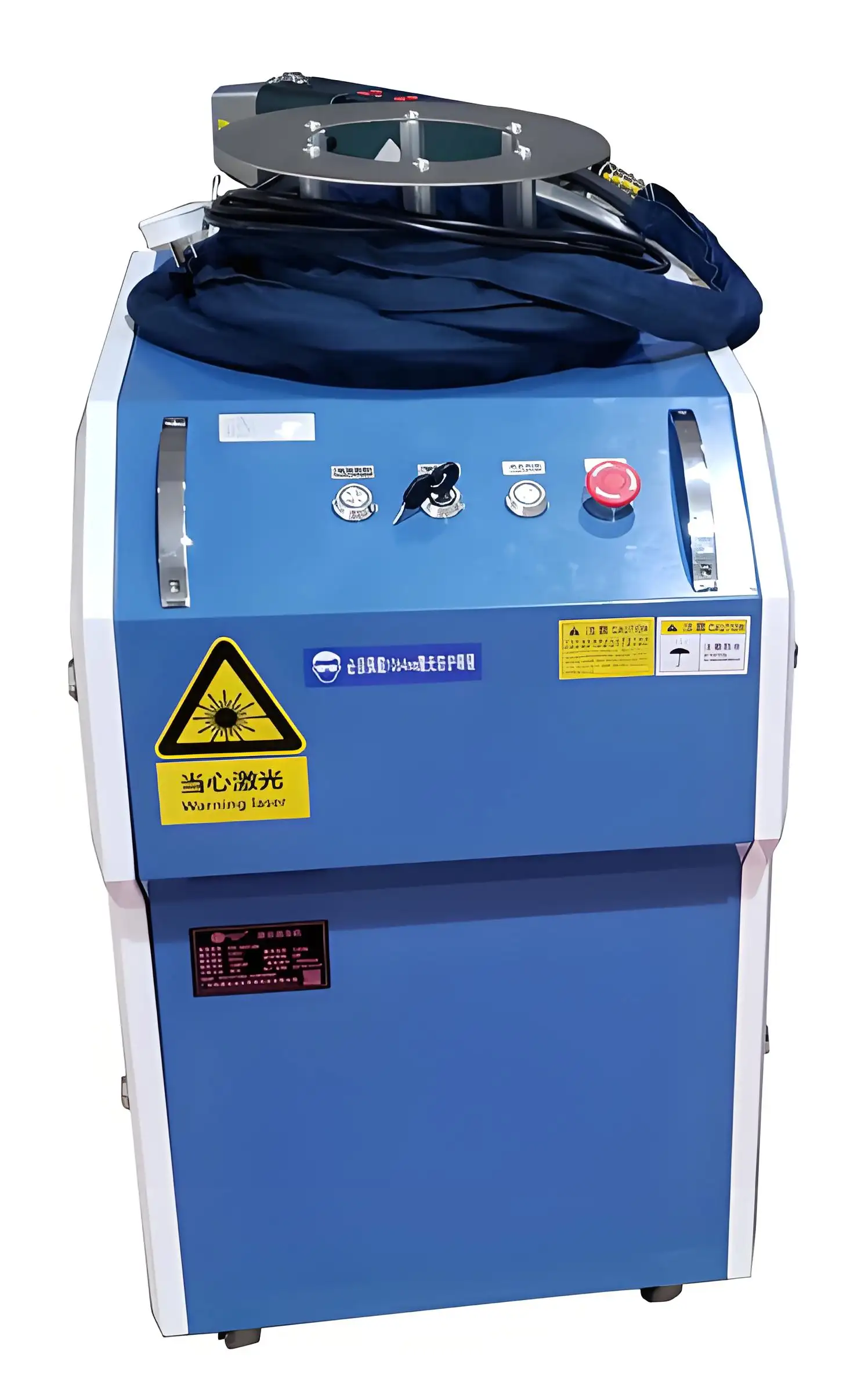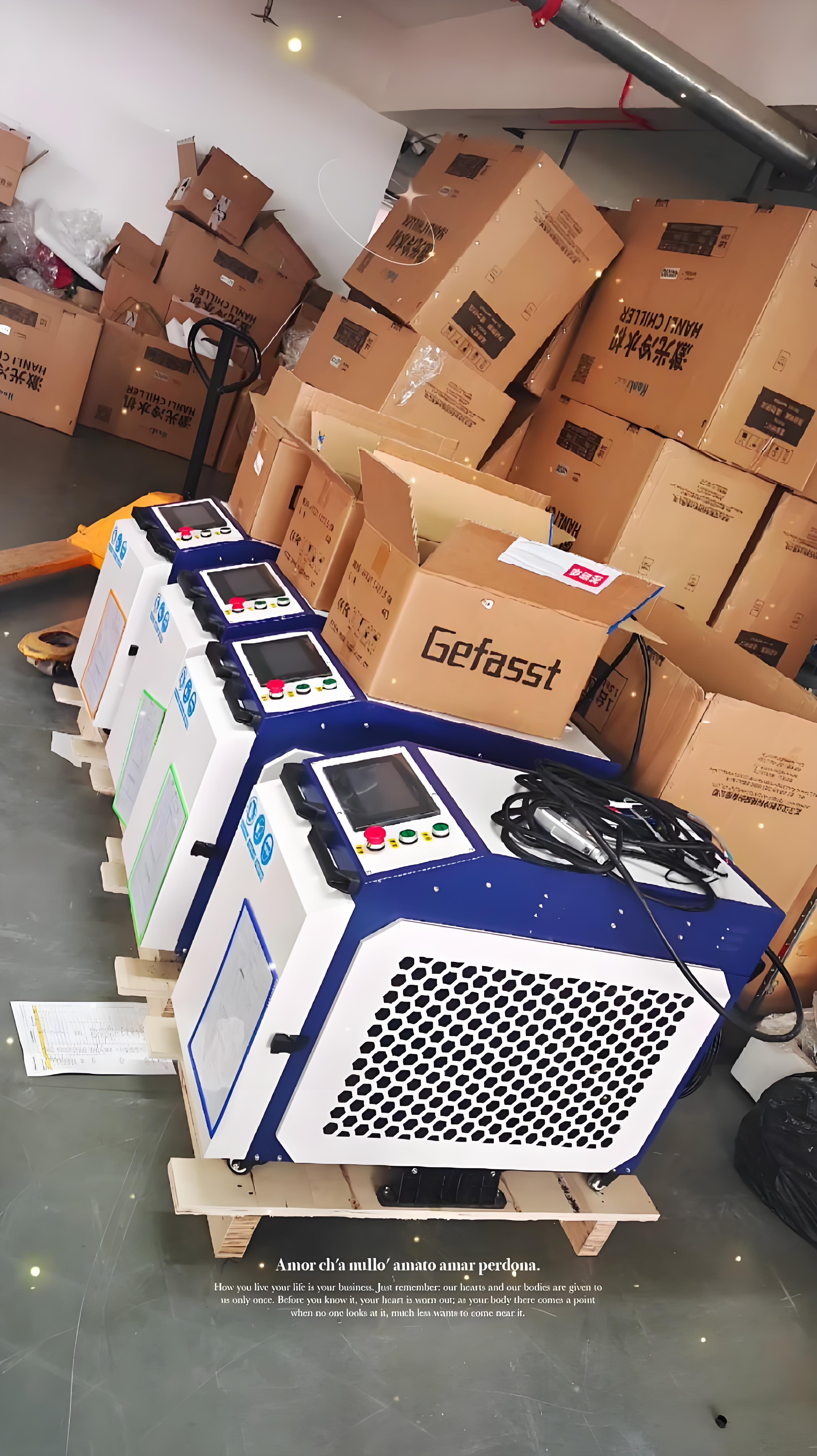Having worked in the industrial equipment sector for over a decade, specializing in laser technologies, I’ve seen how critical after-sales service is when investing in a laser rust removal machine. These machines are game-changers for industries like manufacturing, shipbuilding, and automotive restoration, offering a precise, eco-friendly way to strip rust and contaminants. But their high-tech nature means you need reliable support to keep them running smoothly. When clients ask me about after-sales service, they’re often unsure what to expect or worried about being left high and dry post-purchase. Drawing from years of experience installing, servicing, and consulting on these machines, I’ll break down what typical after-sales service includes, what to look for, and how to ensure you’re covered when you need it most.

Why After-Sales Service Matters for Laser Rust Removal Machines
Laser rust removal machines are sophisticated pieces of equipment, often costing tens of thousands of dollars. They use high-powered lasers to vaporize rust, paint, or coatings without damaging the underlying material. While they’re built for durability, their complex components—like laser sources, cooling systems, and optics—require regular maintenance and occasional repairs. Without solid after-sales support, downtime can grind your operations to a halt, costing you time and money.
I recall a client in the marine industry who bought a 1000W laser rust remover for ship maintenance. The machine was a beast, but when a cooling system glitch cropped up, they were stuck until the supplier sent a technician. That experience taught me how vital it is to understand what’s included in after-sales service before signing the dotted line. Let’s dive into the key components you can expect from reputable suppliers.
Core Components of After-Sales Service for Laser Rust Removal Machines
After-sales service varies by manufacturer and distributor, but the best providers offer a comprehensive package to keep your machine operational. Here’s what you’ll typically find:
1. Warranty Coverage
Most laser rust removal machines come with a standard warranty, usually lasting 1–3 years, covering parts and labor for manufacturing defects. Some brands, like CleanTech or P-Laser, offer extended warranties for critical components like the laser source, which can last up to 5 years. I’ve seen warranties save clients thousands when a faulty galvanometer needed replacing, so always check the fine print for what’s included and excluded.
Warranty terms often cover:
Laser source and optics
Cooling system (air or water-based)
Control systems and software
Exclusions typically include consumables (like lenses) or damage from misuse.

2. Technical Support
Reliable technical support is a lifeline when issues arise. Most suppliers provide 24/7 phone or email support, often with remote diagnostics to troubleshoot problems quickly. I’ve worked with clients who avoided days of downtime because their supplier’s tech team guided them through a software reset over a video call. Top-tier brands also offer on-site support for complex issues, dispatching technicians to your facility.
In my experience, the best support teams are multilingual and available across time zones, especially for international buyers. For example, a client in Singapore praised their Laserax supplier for resolving a calibration issue via remote access within hours.
3. Maintenance and Training
Proper maintenance is key to maximizing a laser rust removal machine’s lifespan, and good after-sales service includes maintenance guidance and operator training. Most suppliers offer:
Initial training during installation, covering operation, safety, and basic upkeep.
Maintenance schedules for tasks like cleaning optics or checking coolant levels.
Training refreshers for new staff, either on-site or via online modules.
I once trained a factory team on a 2000W laser cleaner, and their manager noted how the supplier’s detailed training manual helped them avoid common errors like improper lens cleaning, which can scratch delicate optics.
4. Spare Parts and Consumables
Access to spare parts and consumables is critical to minimize downtime. Reputable suppliers maintain a stock of:
Lenses and protective windows
Filters for cooling systems
Cables and connectors
Some brands, like IPG Photonics, offer next-day delivery for critical parts, which is a lifesaver in high-pressure environments. I’ve seen clients struggle when suppliers didn’t stock parts locally, forcing them to wait weeks for shipments from overseas. Always ask about part availability and delivery times before buying.
5. Software Updates and Upgrades
Laser rust removal machines rely on software for precise control, and good after-sales service includes free software updates to improve performance or fix bugs. Some suppliers also offer optional upgrades for enhanced features, like automated scanning patterns or integration with robotic systems. A client in the automotive sector told me their P-Laser machine got a software update that boosted efficiency by 15%, all covered under their service agreement.

6. On-Site Repair and Preventive Maintenance
For major issues, suppliers often provide on-site repair services, sending certified technicians to diagnose and fix problems. Many also offer preventive maintenance contracts, where technicians visit regularly to inspect and service the machine. I’ve seen these contracts catch issues—like clogged cooling filters—before they caused costly breakdowns. One manufacturing plant I worked with saved thousands by catching a laser source misalignment during a routine check.
7. Extended Service Contracts
Beyond the warranty, many suppliers offer extended service contracts for continued coverage. These typically include:
Priority technical support
Discounted parts and labor
Annual maintenance visits
While not mandatory, I recommend these for high-use environments like shipyards or heavy manufacturing, where downtime is especially costly.
Comparison Table of After-Sales Service Components
To give you a clearer picture, here’s a table summarizing key after-sales service elements from top suppliers:
|
Service Component |
Typical Coverage |
Key Benefits |
Considerations |
|---|---|---|---|
|
Warranty |
1–3 years, parts & labor |
Covers defects, reduces repair costs |
Check exclusions, extended options |
|
Technical Support |
24/7 phone, email, remote diagnostics |
Quick issue resolution, minimizes downtime |
Availability of on-site support |
|
Spare Parts |
Lenses, filters, cables |
Fast replacements, keeps machine running |
Local stock, delivery times |
|
Maintenance & Training |
Initial training, maintenance schedules |
Extends machine life, improves operator skill |
Access to refreshers, training materials |
This table highlights what to expect, but let’s explore how these services play out in real-world scenarios.
Real-World Experiences with After-Sales Service
Over the years, I’ve seen after-sales service make or break a client’s experience with their laser rust removal machine. One standout case was a shipyard that invested in a CleanTech LPC-2000-CTHD. When their laser source started underperforming after 18 months, the supplier replaced it under warranty and sent a technician to recalibrate the system—all at no cost. The yard was back up and running in two days, which was critical for their tight maintenance schedule.
On the flip side, I worked with a small fabrication shop that bought a budget machine from an overseas supplier. When their control board failed, they waited three weeks for a replacement part, with no local support available. That experience taught me to always prioritize suppliers with local service networks and responsive support teams.

What to Look for in After-Sales Service
Not all after-sales service is created equal. Here’s what I’ve learned to prioritize when evaluating suppliers:
1. Local Presence
A supplier with local technicians or service centers can respond faster than one relying on international shipping. For example, Laserax has service hubs in North America and Europe, which speeds up repairs for clients in those regions.
2. Clear Warranty Terms
Read the warranty carefully to understand what’s covered. Ask about exclusions (e.g., damage from improper use) and whether labor costs are included for repairs. I’ve seen clients assume labor was covered, only to face unexpected bills.
3. Fast Parts Delivery
Downtime kills productivity, so ensure the supplier has local or regional stock for critical parts. Brands like IPG Photonics and P-Laser excel here, with robust supply chains.
4. Comprehensive Training
Good training reduces operator errors, which can void warranties or cause breakdowns. Look for suppliers offering hands-on training and detailed manuals. Online training portals are a bonus for refreshing skills.
5. Responsive Support
Test the supplier’s support before buying—call or email with questions to gauge their response time. I always advise clients to ask for case studies or references to confirm the supplier’s track record.
6. Flexible Service Plans
Some suppliers offer tiered service plans, letting you choose the level of support that fits your budget. For high-use machines, a preventive maintenance contract is often worth the cost.

Common Challenges and How to Address Them
Even with great after-sales service, challenges can arise. Here’s how to handle common issues:
Delayed Repairs: If parts or technicians aren’t available locally, delays can occur. Choose suppliers with regional service centers and ask about loaner units for critical operations.
Operator Errors: Improper use, like neglecting lens cleaning, can cause issues. Invest in thorough training and post maintenance checklists in the workspace.
Warranty Disputes: Suppliers may deny claims if they suspect misuse. Document all maintenance and usage to strengthen your case. I’ve helped clients resolve disputes by providing detailed service logs.
High Repair Costs Post-Warranty: Repairs outside warranty can be pricey. Consider an extended service contract or budget for a maintenance fund to cover unexpected costs.
The Bigger Picture: Why After-Sales Service Is a Dealbreaker
In my years in the industry, I’ve learned that a laser rust removal machine is only as good as the support behind it. A great machine with poor service can become a liability, while a solid service package can turn a good machine into a long-term asset. As industries like manufacturing and restoration lean more on laser technology for its precision and eco-friendly benefits, the demand for reliable after-sales support is growing.
I recently spoke with a supplier rep who noted that top brands are investing heavily in global service networks and remote diagnostics to meet this demand. This trend suggests that after-sales service will only become more robust, making now a great time to invest in a laser rust remover—if you choose the right supplier.
Final Thoughts
After-sales service for laser rust removal machines typically includes warranty coverage, technical support, training, spare parts, software updates, on-site repairs, and service contracts. These components are designed to keep your machine running smoothly, minimize downtime, and protect your investment. From my experience, brands like CleanTech, P-Laser, Laserax, and IPG Photonics set the standard with comprehensive support, but always verify what’s offered before buying.
Choosing a supplier with local presence, clear terms, and responsive support is just as important as picking the right machine. By planning for maintenance, training your team, and understanding your warranty, you can ensure your laser rust remover delivers value for years to come. If you’re considering one of these machines, take the time to research the after-sales package—it’s the key to a hassle-free experience.

Related Questions and Answers
Q: How long does a warranty typically last for a laser rust removal machine?
A: Most warranties last 1–3 years, covering parts and labor for defects. Some brands offer extended warranties for key components like the laser source, up to 5 years.
Q: What should I do if my machine breaks down outside of warranty?
A: Contact the supplier for repair options. Consider an extended service contract for ongoing coverage, or budget for repairs using OEM parts to ensure compatibility.
Q: Can I perform maintenance on my laser rust removal machine myself?
A: Yes, for basic tasks like cleaning lenses or checking coolant levels, following the supplier’s guidelines. For complex issues, like laser source repairs, rely on certified technicians.
Q: How do I know if a supplier’s after-sales service is reliable?
A: Ask for references, check online reviews, and test their support by contacting them with questions. Look for suppliers with local service centers and fast response times.






